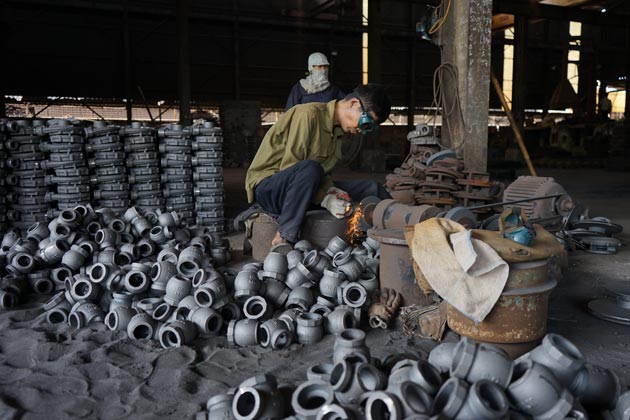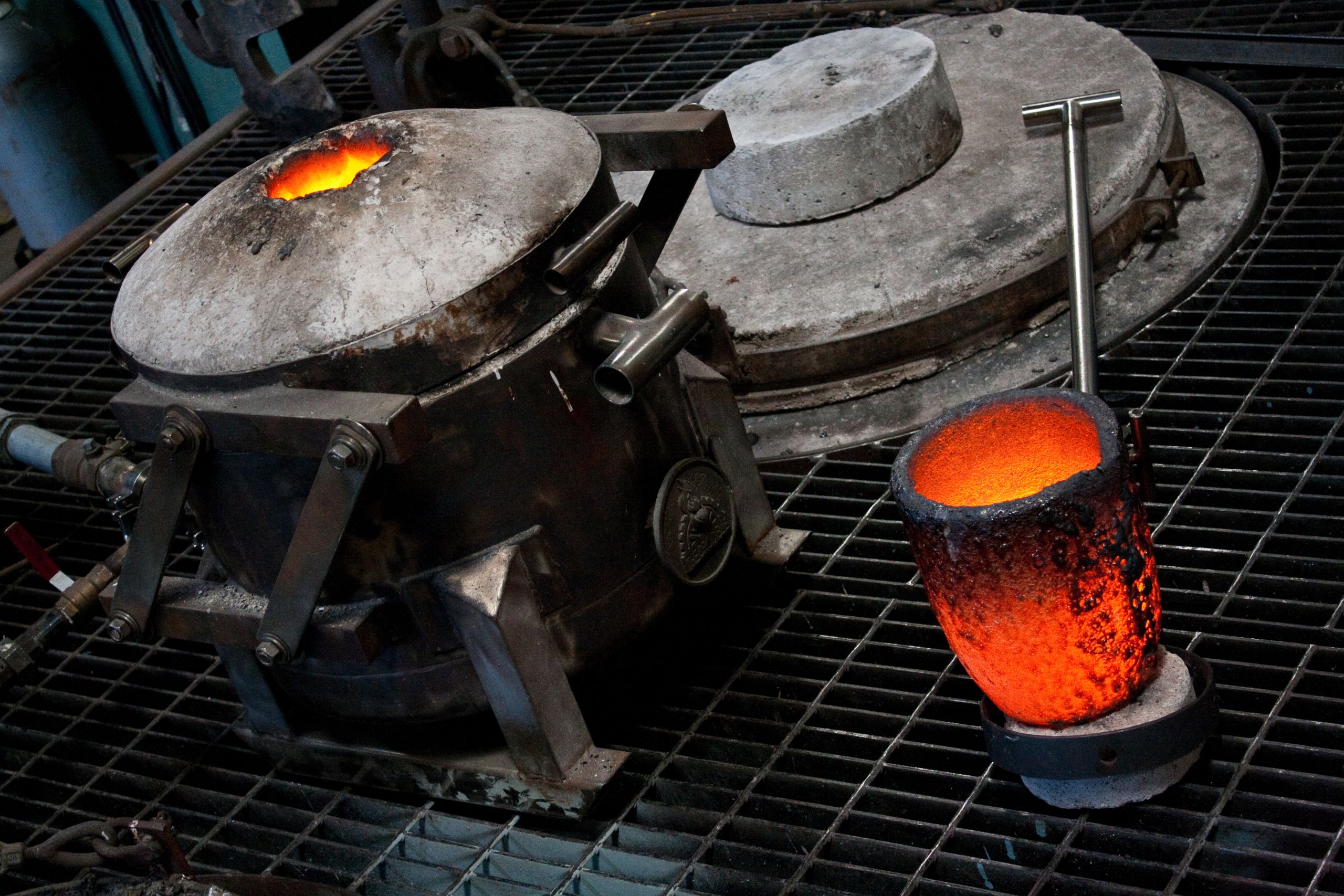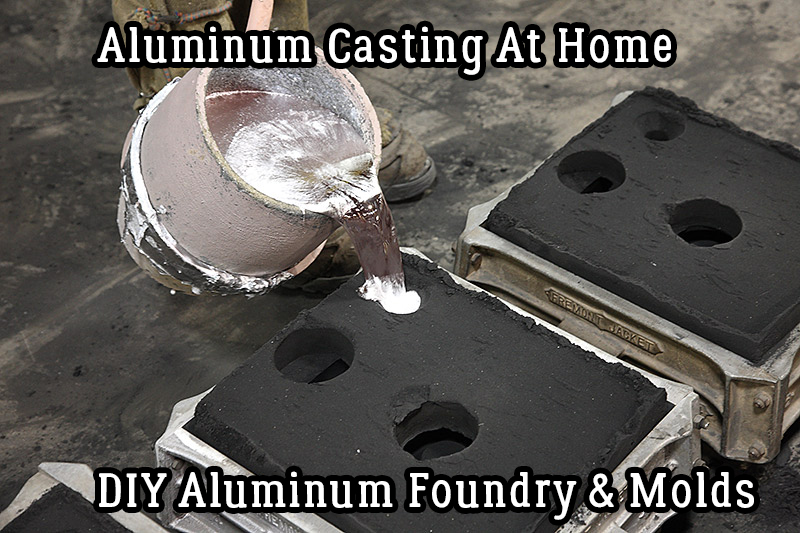Exploring Aluminum Foundry Wisconsin and its role in industrial casting
How Aluminum Foundry Adds To Improvements in Aerospace Design
Aluminum foundries are important to advancements in aerospace engineering. They produce light-weight, high-strength components that are essential for modern-day airplane. Through innovative casting strategies, these foundries produce complicated geometries that boost structural honesty. Furthermore, the growth of exceptional Aluminum alloys sustains the sector's focus on fuel performance and sustainability. However, obstacles continue to be in the production procedure. Understanding these elements discloses the profound effect of Aluminum on air travel's future.
The Significance of Lightweight Materials in Aerospace Style
As the aerospace industry remains to advance, the importance of light-weight materials ends up being significantly evident. The demand for effectiveness and sustainability drives designers to prioritize making use of materials that lower overall weight without jeopardizing architectural stability. Light-weight materials, specifically Aluminum, play a necessary role in improving gas efficiency, improving haul capability, and enhancing the overall performance of aircraft.
Additionally, the assimilation of these products enables cutting-edge layouts, making it possible for suppliers to create even more aerodynamic shapes that can hold up against extreme problems. The reduction in weight not only reduces operational expenses but also adds to a lowered ecological impact, straightening with global efforts toward sustainability in aeronautics.
Advanced Spreading Techniques in Aluminum Foundries
Advanced spreading techniques in Aluminum factories play an important duty in aerospace engineering by making it possible for the manufacturing of lightweight and exact parts. Technologies in mold style and precision spreading procedures are essential in attaining suitable performance and architectural stability. Additionally, the growth of light-weight alloys enhances the total effectiveness and effectiveness of aerospace applications.
Cutting-edge Mold And Mildew Style
Innovative mold style plays an essential duty in the efficiency and effectiveness of Aluminum factories, especially within the aerospace field. By leveraging sophisticated products and techniques, modern-day mold and mildews can be crafted to stand up to high temperatures and pressures, making sure peak performance during the spreading process. These designs often incorporate complicated geometries that enable the production of light-weight yet structurally sound elements, essential for aerospace applications. Additionally, making use of computer-aided style (CAD) software assists in specific modeling, enabling foundries to refine and mimic mold and mildew designs before physical production begins. This not just boosts the quality of cast parts however additionally reduces waste and lead times, causing significant expense financial savings. Generally, cutting-edge mold and mildew style is a foundation of development in Aluminum Foundry technology for aerospace design.
Precision Casting Procedures
The efficiency of innovative mold styles effortlessly integrates with precision spreading processes, which are important for creating high-grade Aluminum parts in aerospace design. These procedures, consisting of sand spreading, pass away spreading, and financial investment casting, guarantee the creation of complex geometries with tight tolerances. Advanced techniques like vacuum casting and stress die casting enhance the integrity and surface area coating of the last items. Precision casting minimizes material waste while making best use of the mechanical homes of Aluminum, important for aerospace applications. Additionally, utilizing real-time tracking and progressed simulation devices during the casting process enables immediate adjustments, leading to improved high quality control. Jointly, these precision casting processes placement Aluminum factories at the forefront of aerospace advancement, supporting the sector's demand for reliability and efficiency.
Lightweight Alloy Growth
As aerospace engineers seek to boost fuel efficiency and efficiency, lightweight alloy growth ends up being a necessary emphasis in Aluminum foundries. These shops utilize sophisticated casting strategies to produce alloys that supply remarkable strength-to-weight ratios. Innovations in alloy structure, including the consolidation of elements like lithium and magnesium, make it possible for the manufacturing of materials that stand up to extreme problems while lowering general airplane weight. Techniques such as die casting and financial investment casting help with the accuracy production of complex shapes, which are crucial for aerospace applications. In addition, continuous research intends to optimize these alloys for enhanced mechanical residential or commercial properties and boosted sturdiness. By focusing on light-weight alloy development, Aluminum factories greatly contribute to the advancement of aerospace engineering, paving the means for much more lasting and effective airplane designs.

Enhancing Structural Honesty Via Aluminum Components
Aluminum elements supply substantial benefits in improving architectural honesty within aerospace engineering. Their lightweight nature adds to total performance while keeping toughness, which is essential for aircraft efficiency. In addition, the anxiety resistance properties of Aluminum aid assure the durability and reliability of aerospace structures under numerous functional problems.
Lightweight Material Benefits
While traditional materials usually jeopardize weight for strength, utilizing Aluminum parts in aerospace design uses considerable advantages in structural honesty. Aluminum's light-weight nature adds to general design performance, permitting even more streamlined airplane that take in less fuel, thereby enhancing sustainability. The product's outstanding strength-to-weight proportion assurances that components keep resilience without including unnecessary mass. This top quality promotes boosted performance and dexterity in flight, in addition to optimized payload capacities. Furthermore, Aluminum's resistance to deterioration extends the life-span of aerospace structures, lowering maintenance expenses and boosting security. As suppliers progressively take on Aluminum alloys, the aerospace industry experiences a transformative shift in the direction of much more efficient and reliable design services that focus on both performance and ecological duty.
Stress Resistance Properties
Although numerous products have unique residential or commercial properties, Aluminum's exceptional tension resistance attracts attention as an essential element in improving the architectural honesty of aerospace parts. This resistance plays a crucial duty in making sure that airplane can hold up against numerous operational stress and anxieties, consisting of exhaustion, influence, and ecological problems. Aluminum alloys, particularly crafted for aerospace applications, display high tensile stamina while maintaining lightweight characteristics, making it possible for designers to make more reliable frameworks - Aluminum Foundry. In addition, the capability of Aluminum to withstand cyclic loading without significant contortion adds to the durability and reliability of aerospace components. As advancements continue in Aluminum Foundry techniques, the growth of stress-resistant Aluminum elements guarantees further renovations in efficiency, safety, and performance throughout the aerospace market, solidifying Aluminum's function as a preferred material in modern engineering
Fuel Efficiency Improvements Driven by Aluminum Innovations
As the aerospace sector seeks to improve gas efficiency, innovative uses Aluminum have actually become a necessary solution. Aluminum's light-weight nature especially lowers aircraft read weight, enabling lower gas usage during flight. This decrease in weight is crucial, as also small declines can lead to significant enhancements in overall gas economic climate.
Advanced Aluminum alloys, designed for improved toughness and longevity, allow manufacturers to produce components that preserve architectural stability while reducing mass - Aluminum Foundry. In addition, the combination of Aluminum in airframes and engine parts facilitates enhanced the rules of aerodynamics, contributing to decreased drag and increased performance
The adoption of Aluminum in aerospace not just satisfies the need for fuel-efficient layout but also straightens with regulatory stress for lower emissions. As these developments remain to advance, they play a significant role in establishing new standards for gas efficiency, guaranteeing that the aerospace market can fulfill growing financial and ecological challenges.

The Duty of Aluminum in Sustainable Aviation Practices
The increasing emphasis on lasting aviation methods has actually placed Aluminum as an essential material in the mission for greener airplane design. Recognized for its lightweight residential or commercial properties, Aluminum considerably lowers aircraft weight, leading to lower fuel usage and exhausts. Its recyclability further boosts its sustainability account, as Aluminum can be recycled forever without loss of top quality. This particular supports a round economic situation within the aviation market, minimizing waste and resource depletion.
Innovations in Aluminum alloys have actually improved their toughness and rust resistance, allowing for longer solution life and minimized maintenance demands. These innovations promote the growth of more effective aircraft frameworks, contributing to total look at these guys sustainability efforts. In addition, Aluminum's thermal conductivity plays a critical role in energy-efficient layouts, enhancing systems such as warm exchangers. Collectively, these attributes highlight Aluminum's crucial function beforehand sustainable aviation, aligning with international efforts targeted at decreasing the ecological influence of air traveling.
Obstacles Faced by Aluminum Foundries in Aerospace Production
While Aluminum foundries play a vital role in aerospace production, they face considerable obstacles that can impact manufacturing performance and high quality. One major obstacle is the strict quality assurance criteria required in the aerospace sector. Any kind of flaw can compromise safety and security and performance, demanding extensive evaluation processes that prolong manufacturing timelines. In addition, foundries commonly compete with fluctuating resources expenses, which can impact prices and productivity. The complexity of Aluminum alloys used in aerospace applications additional complicates the production procedure, as specific formulas are crucial for achieving wanted mechanical buildings. Proficient labor lacks impede the capability to preserve top quality production degrees. Environmental policies enforce restrictions on emissions and waste administration, calling for shops to invest in lasting techniques, which can be cost-prohibitive. These factors jointly produce a landscape where Aluminum shops click here for info need to constantly adapt to fulfill the developing needs of aerospace production while guaranteeing safety and security and compliance.
Future Trends in Aluminum Applications for Aerospace Engineering
With advancements in modern technology and boosting demands for performance, the future of Aluminum applications in aerospace design is poised for considerable transformation. The assimilation of cutting-edge Aluminum alloys and compounds is expected to enhance strength-to-weight proportions, causing more fuel-efficient airplane styles. On top of that, developments in additive production strategies will certainly allow for the manufacturing of complicated Aluminum structures that were previously impossible, optimizing performance and minimizing waste.

Sustainable practices will certainly play a crucial duty, with a growing focus on recycling Aluminum to decrease environmental impact. The aerospace market is likely to accept smarter producing procedures, such as automation and expert system, guaranteeing greater top quality and accuracy in Aluminum parts. Collaborations between Aluminum foundries and aerospace companies will certainly cultivate study and growth, paving the means for new applications that satisfy the strict requirements of modern aerospace design. Generally, the future looks guaranteeing for Aluminum's function fit the skies
Regularly Asked Concerns
What Are the Environmental Impacts of Aluminum Manufacturing in Aerospace?
The ecological effects of Aluminum production in aerospace consist of considerable energy intake, greenhouse gas exhausts, and habitat disruption. In addition, mining processes can lead to dirt deterioration and water contamination, raising concerns concerning sustainability and environmental balance.
Just How Does Aluminum Compare to Various Other Products in Aerospace Applications?
Aluminum offers an unique mix of lightweight residential or commercial properties, corrosion resistance, and cost-effectiveness contrasted to other products. Its high strength-to-weight ratio makes it specifically useful for aerospace applications, enhancing fuel efficiency and overall efficiency in aircraft style.
What Qualifications Do Aluminum Foundry Employees Need for Aerospace Projects?
Aluminum Foundry workers call for specific training in metallurgy and casting strategies, together with understanding of aerospace industry standards. Certifications in quality control and safety and security procedures are likewise important to guarantee conformity with strict aerospace task demands.
Exist Any Type Of Safety Worry About Utilizing Aluminum in Aerospace Design?
Safety and security concerns regarding Aluminum in aerospace engineering consist of vulnerability to rust, stress and anxiety, and fatigue cracks. Proper treatment and alloy option are important to mitigate these dangers, making certain architectural honesty and total security in aerospace applications.
Just How Does Aluminum Recycling Benefit the Aerospace Market?
Aluminum reusing greatly profits the aerospace sector by reducing material costs, reducing environmental effect, and saving power. This sustainable technique boosts the market's effectiveness while promoting making use of lightweight, high-performance components in airplane production.
Advanced casting methods in Aluminum factories play a critical role in aerospace engineering by enabling the production of lightweight and specific parts. Innovative mold layout plays a crucial role in the efficiency and effectiveness of Aluminum shops, especially within the aerospace industry. As aerospace engineers look for to boost gas performance and efficiency, light-weight alloy growth ends up being an essential focus in Aluminum foundries. Aluminum alloys, specifically crafted for aerospace applications, show high tensile toughness while keeping light-weight characteristics, enabling engineers to create extra efficient structures. Cooperations in between Aluminum foundries and aerospace firms will certainly cultivate research study and development, paving the means for new applications that meet the rigid requirements of contemporary aerospace design.